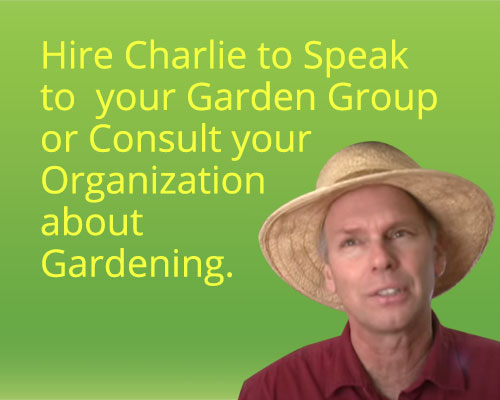Learn how to control insect pests and care for your vegetable garden by planting the right crops, and using barriers, traps, and organic sprays. For more garden videos, check out the National Gardening Association
Transcript
Hi I’m Charlie Nardozzi of the National Gardening Association. Today I’d like to talk to you about organic vegetable garden pest control. If you designed your garden well, built up the soil, and mixed in flowers and herbs with your vegetables chances are you’re not going to have a lot of insect pests. Natural controls, such as toads and frogs, and beneficial insects will take care of a lot of those insects. However, even in a healthy garden things can go wrong. Insects can ruin a crop quickly so you have to be on the lookout for them. But before you go reaching for the spray bottle, it’d be good to know a little bit about the pests. Identify them, learn about their lifecycle, then use traps, barriers and organic insecticides to control them. Let me show you how.
First you want to identify if it’s a pest that’s causing the problem. Animals, disease and weather can cause similar kinds of damage. Check on the undersides of the leaves for the pests and see if you can find them there. Once you find out who’s causing the damage in your garden, you can do a little research about your bug. Find out what kind of plants they like to eat and also about their life cycle. Once you understand their egg, larval and adult stages you’ll better know when to control them. If the pest is a persistent one you might want to consider not planting that vegetable next year or planting a resistant variety.
One of the most effective ways to control pests in a small garden is to handpick and crush the eggs or the adults. If that makes you squeamish you can take a pail of soapy water and just knock the pests right in there. It’s best to pick the beetles in the morning while they’re still sluggish. If you do it consistently over time you’ll eventually reduce their numbers. If you have a lot of insects you can pay your kids a penny a beetle they’ll get rich and you get rid of the beetles.
If handpicking the pest isn’t enough you can create a barrier over your crops to prevent the insects from laying eggs. I like to use a floating row cover. This lightweight, cheesecloth like material lets air, light and water in but it blocks the pests. Plants grow really well in there, especially crops like lettuce, beets and beans. Anything that doesn’t need to be pollinated by insects can be grown under a floating row cover. You can lay the row cover directly over the plant or put it over these wire hoops creating a nice tunnel. The only thing you have to keep in mind is to check underneath the row cover periodically to make sure no pests have snuck in.
If barriers aren’t practical there are a number of other organic pest controls on the market that are safe for the environment and targeted towards specific pests. Here are some of the best ones to try. Before you spray you should trap. Japanese beetle traps are great for that persistent beetle and yellow sticky cards are good for aphids. Just be sure to follow the directions as far as the right location and placement of the traps. Insecticidal soaps are a great insecticide to use for soft bodied insects such as white flies, aphids and mealy bugs. You might have to reapply it a number of times to be effective. BT (Bacillus thuriengensis) is a bacteria that controls a specific number of pests. You want to get the right form of BT for the pest you have. It controls cabbage worms, Colorado potato beetles and squash vine borers. You want to spray it in the evening and also when rain is not in the forecast. Neem oil is derived from the seed of a tropical tree that grows in India. It’s very safe and it controls a wide range of pests including Japanese beetles, cucumber beetles, Mexican bean beetles, and squash bugs. Neem oil won’t necessarily kill the pests but it’ll deter their mating and feeding.


